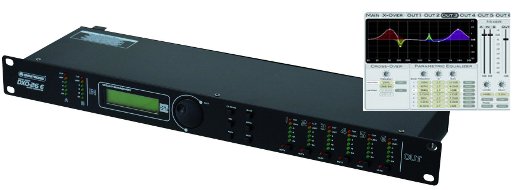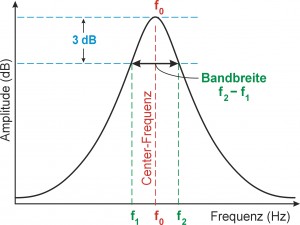Digital loudspeaker management – part 2

We want to complete the list of tools described in the first part. We start with equalizers – also a vital part of oudspeaker controllers. The frequency range of a PA-system can easily be corrected with fully parametric equalizers. While mixer equalizers are mostly semi-parametric, i. e. only amplitude and frequency can be changed, a fully parametric equalizer can also change the filter bandwidth or shape of the bell. Consider that a high filter bandwidth (Q-factor) equals a small bandwidth and vice versa. As already mentioned, too harsh adjustements of the frequency response have to be avoided because the phase problems make the positive effects of the correction void. Here, less is often more!

Almost every controller also features a delay function for delaying the signal, although there are major differences. The sense of a delay is a time shift of the signal for a second loudspeaker line far away from the main PA. These delay lines in a distance of 30 or 50 meters from the stage in the middle of the audience must be delayed in respect to the speed of sound so that the sound from the main PA and the delay lines is not different. The second use of delays is the time shift correction within the main PA. If the subwoofers position is in front or behind the high/mid speakers, this can also be corrected with a little delay. Also coaxially installed speakers, e. g. a horn in front of a mid woofer, must be corrected in their time shift as phase deletion may occur in the centre of both signal sources. The phase of some speakers must be turned by 180° which can also be realized with a controller.
One of the most important protection circuits of larger PA-systems is the limiter which can also be found in most audio controllers. There are peak limiters absorbing short impulses and thus protecting the speakers from mechanical damage and RMS limiters controlling the average audio level and thus the thermal strains of the speakers. Last but not least, limiters can help to fulfill noise protection regulation. Important parameters are the attack time (how fast the limiter should react) and the release time (how long the level should be lowered). The threshold is the value at which the limiter starts reducing the level. Ratio describes the strength or ratio of the compression (1:1 means no compression, 10:1 and more is called limiter). Limiters represent an extreme form of a compressor and mostly have a fixed ratio. They also differ in their response behaviour: hard knee means that the amplitude is immediately bent when reaching the threshold while soft knee means a softer transition already starting before the threshold.
System controllers are mostly designed in 1 unit rack format and thus quite uncomfortable when using the operational elements. Most controllers can be controlled via USB, RS232 or ethernet from a pc or MAC. Via a graphical surface, all functions are available and in many cases, the present levels are also monitored. Several presets for different settings can be filed on a computer and be transmitted to the controller when needed. For special applications like permanent installations, controllers are also built without operational elements and can thus only be controlled via computer. This also provides higher protection against misuse.
Signal input is either analog or digital (e. g. AES/EBU or network protocols like CobraNet), the output signals for the amplifiers are normally analog.
Certain controller areas can be blocked via passwort hierarchies which is a decicive advantage for permanent installations or dry hire.
Practical tipps:If a preset is not provided by the manufacturer, presets have to be created with one’s own ears. As a starting point the following frequency ranges of loudspeakers may be used:18“ subwoofers: from 35 Hz to 90/100 Hz15“ subwoofers: from 45 Hz to 120 HzMid woofer: from 100/120 Hz to 1.5/2.5 kHzHighs: from 1.5/2.5 kHz
These values are only a rough orientation. Other factors like high speaker size and mid woofer size along with the kind of material (CD or live) also have to be considered.


